The Four Fundamentals
There are four basic flight maneuvers upon which all flying tasks are based: straight-and-level flight, turns, climbs, and descents.
In addition, the powered parachute (PPC) has a unique characteristic, the pendulum effect, as covered in Chapter 2. This chapter will cover the basic flight maneuvers and how they are influenced by this pendulum effect.
Flight Controls
The PPC has two basic flight controls:
- Throttle: used to adjust the vertical speed to climb or descend
- Steering controls: used to turn right or left
The wing design, angle of trim, and total weight determine the PPC airspeed, which remains about the same for most flight operations.
The vast majority of PPC steering is done via either foot pedals or foot steering bars. However, some PPC designs incorporate hand steering controls. In addition to the mechanical hand or foot steering controls, the steering line itself can be pulled directly or in combination with the mechanical controls. For simplicity of the information in this handbook, flight steering controls will be addressed as foot controls. For those PPCs with hand steering controls or steering lines that are pulled directly, substitute “push the foot steering control” with “pull the hand steering control” or “pull on the steering line.”
Throttle
While in the air, the throttle provides thrust and therefore controls altitude; it is used to climb and descend. Throttle changes will not measurably affect your airspeed. The aircraft maintains about the same indicated airspeed throughout your pitch angle and altitude changes. There is less than a 1 MPH increase in speed as the throttle is increased from gliding flight to level flight; not easily measured on the instruments or felt by the pilot in the air.
Pitch angle changes in a PPC are similar to pitch changes in an airplane being flown at a constant airspeed. Assuming a typical 3-to-1 glide ratio for a powered parachute, the pitch increases about 20 degrees from gliding flight to level flight. The pitch would increase an additional 20 degrees from level flight to full power climb, assuming a three-to-one climb path with a high-powered engine. This total pitch change of 40 degrees from glide to high-powered climb is significant and noticed by the pilot, passenger, and observers on the ground. Throughout the large pitch variations of the PPC, the PPC will continue to fly at about the same airspeed, even with the engine off.
As you descend with the throttle retarded, the nose of the cart is pointed more towards the ground while the wing is overhead. As you climb, the nose of the cart is pointed more towards the sky, and the wing appears to be rotated in back of you. These are large pitch changes. A common misunderstanding is that these pitch changes, which can be as much as 40 degrees, are a change of angle of attack. This is not the case. The angle of attack stays almost constant for the same weight and the same speed, but the pitch angle, especially as viewed from the cart, changes dramatically.
On a PPC, the angle of the trim is determined by the suspension lines and set at the factory, but the cart can rotate around the riser attachment point to the cart. Generally, the angle between the cart and the wing remains the same; both pitch together rotating around the center of gravity of the complete aircraft. [Figure 6-1]
Flying in good atmospheric conditions and using smooth throttle applications can avoid additional loading which results in slight increases in angle of attack and speed.
A common, inappropriate use of the throttle is an abrupt power application when the engine is at idle. This abrupt application of throttle from idle to full creates a porpoising effect. Gradually increase the throttle to full to avoid the abrupt porpoising.
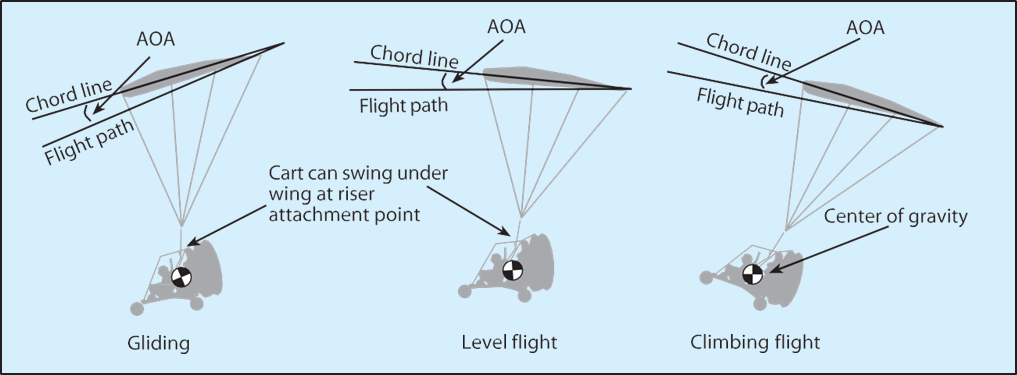
Figure 6-1. The cart and wing pitch together.
Clearing Turns
Pilots should perform clearing turns prior to beginning any maneuver and any turns. Proper cleaning procedures combined with proper visual scanning techniques are the most effective strategy for collision avoidance. The essential idea of the clearing turn is to be certain that the next maneuver is not going to proceed into another aircraft’s flight path. Refer to Chapter 9.
Turning the Powered Parachute
Steering lines run from the foot controls, through a series of pulleys parallel to the risers and suspension lines and are connected to the trailing edge of the corresponding side of the wing. The right steering line at the front end is attached to the right steering control at the cockpit (either foot or hand control), and the other end is directly attached to the trailing edge of the right side of the wing. Hence, when you push a foot steering control, you pull on a steering line and “pull- down” the trailing edge of the corresponding side of the wing, which creates drag on that side of the wing’s trailing edge. The drag from the pulled-down trailing edge slows down and drops that side’s wing, and the opposite side of the wing simultaneously pivots around the vertical and longitudinal axes in a coordinated turn. The PPC is designed to fly straight into the relative wind, which is a key factor in the PPC’s ability to automatically perform a coordinated turn. [Figure 6-2]
While airborne, you will turn in the same direction of the foot steering control that you push: push right foot—go right; push left foot—go left.
Similar to the pendulum effect with the throttle, there can also be a swinging pendulum effect during turns. For example, if you are in a stabilized right, medium-banked turn (approximately 20 to 45 degrees bank), the pendulum is swinging out opposing the lift component of the wing. If an abrupt left turn is initiated, the wing will start to turn but the momentum of the cart cannot respond as quickly. This results in the pilot not coordinating the pendulum effect, and can be avoided with smoother and less abrupt turns so the cart can keep up with the wing.
Feel of the PPC
The ability to sense a flight condition, without relying on cockpit instrumentation, is often called “feel of the PPC,” but senses in addition to “feel” are involved.
Sounds inherent to flight are an important sense in developing “feel.” The air rushes past the PPC pilot, who is not typically masked by enclosures. When the level of sound increases, it indicates that speed is increasing. Also, the powerplant emits distinctive sound patterns in different conditions of flight as the RPM is adjusted. The sound of the engine in cruise flight may be different from that in a climb, and different again from that in a descent and can aid the pilot in estimating not only the present airspeed but the airspeed trend.
The sources of actual “feel” are important to the pilot. The pilot’s own body responds to forces of acceleration. These “G” loads imposed on the cart are also felt by the pilot. Increased G loads force the pilot down into the seat or raise the pilot against the seat belt. Radial accelerations produce side loadings, which will shift the pilot from side to side in the seat. These forces need not be strong, only perceptible by the pilot to be useful.
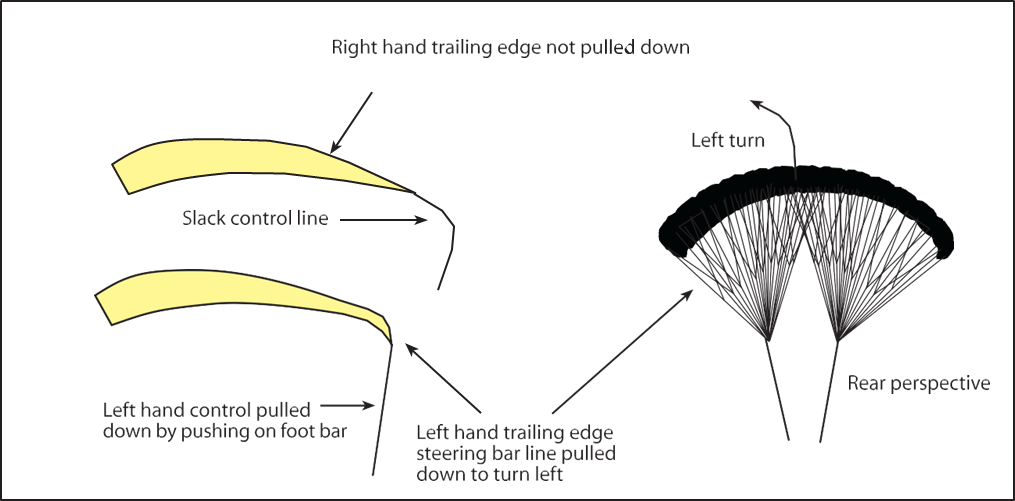
Figure 6-2. Apply steering input to one side of the trailing edge to turn.
An accomplished pilot who has an excellent “feel” for the PPC will be able to understand and coordinate the rate of bank change so as not to overshoot the desired course or bank, and ultimately be able to anticipate the pendulum effect. The wing trailing edge control surfaces move in the airstream and meet resistance proportional to the speed and weight of the cart. When the cart is heavy and flying faster, the steering controls are stiffer and harder to move because the wing internal pressure is higher. When the cart is light and flying slower, there is less force required and controls move more easily.
The senses that contribute to the “feel” of the airplane are inherent in people. However, “feel” must be developed. The flight instructor should direct the beginning pilot to be attuned to these senses and teach an awareness of their meaning as it relates to various conditions of flight. To do this effectively, the flight instructor must fully understand the difference between perceiving something and merely noticing it. It is a well-established fact that the pilot who develops a “feel” for the PPC early in flight training will have little difficulty with advanced flight maneuvers.
Attitude Flying
In a PPC, flying by attitude means visually establish- ing the aircraft’s attitude with reference to the natural horizon. [Figure 6-3] Attitude is the angular difference measured between an aircraft’s axis and the line of the Earth’s horizon. Pitch attitude is the angle formed by the longitudinal axis of the aircraft and the horizon. Bank attitude is the angle formed by the lateral axis with the horizon.
In attitude flying, the PPC pilot controls two components: pitch and bank.
- Pitch control is the control of the PPC about the lateral axis by using the throttle to raise and lower the nose in relation to the natural horizon.
- Bank control is control of the PPC about the longitudinal axis by use of the PPC steering controls to attain a desired bank angle in relation to the natural horizon.
Straight-and-Level Flight
It is impossible to emphasize too strongly the necessity for forming correct habits in flying straight and level. All other flight maneuvers are in essence a deviation from this fundamental flight maneuver. Perfection in straight-and-level flight will not come of itself. It is not uncommon to find a pilot whose basic flying ability consistently falls just short of minimum expected standards, and upon analyzing the reasons for the shortcomings discover that the cause is the inability to properly fly straight and level.
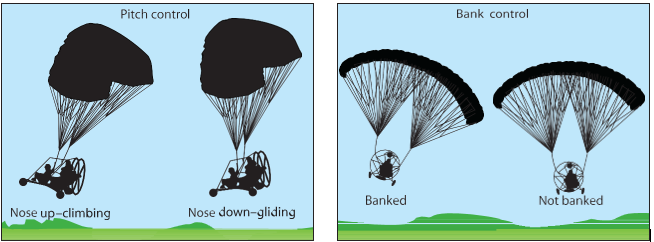
Figure 6-3. PPC attitude is based on relative positions of the aircraft on the natural horizon.
Straight-and-level flight is a flight in which a constant heading and altitude are maintained. It is accomplished by making immediate and measured corrections for deviations in direction and altitude from unintentional slight turns, descents, and climbs. Level flight, at first, is a matter of consciously fixing the relationship of the position of some portion of the PPC, used as a reference point, with the horizon. In establishing the reference points, place the PPC in the desired position and select a reference point. No two pilots see this relationship exactly the same. The references will depend on where the pilot is sitting, the pilot’s height (whether short or tall), and the pilot’s manner of sitting. It is, therefore, important that during the fixing of this relationship, you sit in a normal manner; otherwise the points will not be the same when the normal position is resumed.
In learning to control the aircraft in level flight, it is important to use only slight control movements, just enough to produce the desired result. Pilots need to associate the apparent movement of the references with the forces that produce it. In this way, you can develop the ability to regulate the change desired in the aircraft’s attitude by the amount and direction of forces applied to the controls.
The pitch attitude for level flight (constant altitude) is
usually obtained by selecting some portion of the air- craft’s nose as a reference point, and then keeping that point in a fixed position relative to the horizon. [Figure 6-4] Using the principles of attitude flying, that position should be cross-checked occasionally against the altimeter (if so equipped) to determine whether or not the pitch attitude is correct. If altitude is being gained or lost, the pitch attitude should be readjusted in relation to the horizon and then the altimeter rechecked to determine if altitude is now being maintained. The application of increasing and decreasing throttle is used to control this attitude.
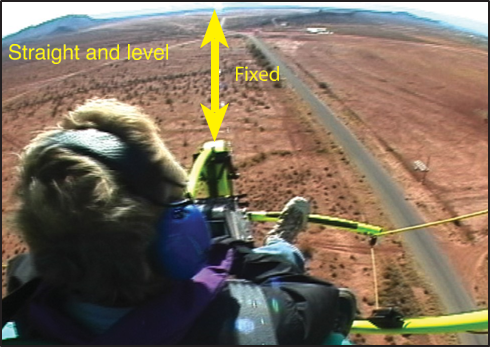
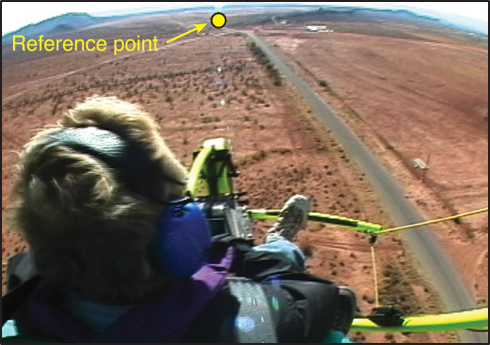
Figure 6-4. Nose reference for straight-and-level flight.
In all normal maneuvers, the term “increase the pitch attitude” implies raising the nose in relation to the horizon (by increasing power); the term “decreasing the pitch attitude” means lowering the nose (by decreasing power). While foot controls do have an effect on altitude, they are not typically used as a control for flying straight and level. A PPC must be capable of maintaining altitude to tolerances using the controls as designed.
Anytime the wing is banked, even very slightly, the aircraft will turn. In a PPC the pilot has no useful reference to measure bank angle like an airplane or weight shift control aircraft where the wing tips are visible in relation to the horizon. The objective of straight-and-level flight is to detect small deviations from laterally level flight as soon as they occur, neces- sitating only small corrections. Reference to the magnetic compass or GPS, if so equipped, can be made to note any change in direction; however, the visual reference of a point on the horizon with a point on the aircraft such as the front wheel or instrument panel will typically be used for sport pilot training.
Continually observing the nose to align the heading should be avoided. The pilot must spend more time scanning for air traffic than focusing on heading. This helps divert the pilot’s attention from the aircraft’s nose, prevents a fixed stare, and automatically ex- pands the pilot’s area of vision by increasing the range necessary for the pilot’s vision to cover.
Straight-and-level flight requires almost no application of control pressures if the aircraft is properly trimmed to fly straight and the air is smooth. Some PPCs will have a directional trim control which adds the tension in a control line to make it fly straight. Each PPC manufacturer has a unique design for their particular aircraft. The pilot must not form the habit of constantly moving the controls unnecessarily. You must learn to recognize when corrections are necessary, and then make a measured response. Tolerances necessary for passing the PPC practical test are ±10 degrees heading and ±100 feet altitude. Students may initially start to make corrections when tolerances are exceeded but should strive to initiate a correction before the tolerances are exceeded, such as starting correction before the tolerance is ±5 degree heading and ±50 feet altitude. Since the PPC does not have an elevator to control the pitch, immediate minor adjustments should be made while flying close to the ground. In flying a low approach (flying straight and level over the centerline of the runway at a low but specified distance from the ground), think of the throttle as the coarse and slow response altitude control, and application of both steering controls (flare) as the fine adjustments to altitude adjustment. Throttle has a slight delay between implementation and response in increasing altitude; flare relatively quickly increases altitude but can only hold altitude changes temporarily (about 2 seconds). This would be like applying flaps on an airplane if no elevator control was available.
While trying to maintain a constant altitude, especially when close to the ground, you can fly with about one- third flare. By holding a small flare, if you encounter downdrafts, you can immediately add a large portion of flare to lift you back to the desired altitude. If the PPC begins to climb, then you can reduce the amount of the flare to return to the desired altitude, until you can adjust your throttle position again.
Common errors in the performance of straight-and-level flight are:
- Attempting to use improper reference points on the aircraft to establish attitude.
- Forgetting the location of preselected reference points on subsequent flights.
- Attempting to establish or correct aircraft attitude using flight instruments rather than outside visual reference.
- Overcontrol and lack of feel.
- Improper scanning and/or devoting insufficient time to outside visual reference.
- Fixation on the nose (pitch attitude) reference point.
- Unnecessary or inappropriate control inputs.
- Failure to make timely and measured control inputs when deviations from straight-and-level flight are detected.
- Inadequate attention to sensory inputs in developing feel for the PPC.
Level Turns
A turn is made by banking the wing in the direction of the desired turn. A specific angle of bank is selected by the pilot, control pressures applied to achieve the desired bank angle, and appropriate control pressures are exerted to maintain the desired bank angle once it is established.
Both primary controls are used in close coordination when making level turns. Their functions are as follows.
- The throttle determines vertical speed and must be increased during a turn for the PPC to remain level. The greater the degree of turn, the greater the throttle/thrust required to remain level; this is similar to an airplane and weight-shift control aircraft.
- The steering bars bank the wings and so determine the rate of turn.
For purposes of this discussion, turns are divided into three types: shallow, medium, and steep.
- Shallow turns are those in which the bank is less than approximately 20°.
- Medium turns are those resulting from approximately 20° to 45° of bank.
- Steep turns are those resulting from 45° or more of the bank. Steep turns are generally not recommended in a PPC.
Bank angle is measured in a PPC from the angle of the horizon and any level component on the PPC, typically- ly the instrument panel, steering bars, cart frame, or any other cart component that can provide a horizontal reference. Each design will have its own unique reference.
Exceeding the limitations specified in the regulations or in the aircraft pilot operating handbook is considered aerobatics and not authorized by the manufacturer’s limitations.
To initiate a turn, drag is created on the side of the wing you want to turn via the steering control bar, slowing and dropping that wing into the desired bank. The side without the drag is flying faster and hence pivots around the slower side. As discussed in Chapter 2, the PPC is designed to track directly into the relative air stream, similar to a weight-shift control aircraft. Therefore, no rudder is needed to coordinate a turn.
A shallow bank produces a noticeable turn but you likely will not notice an increase in load or airspeed. A constant pressure is required on the steering bar to maintain the bank angle for the turn. Abruptly releasing the pressure on the foot bar would typically bring the PPC back to straight flight because the pendulum effect is so minor.
A medium bank turn requires more PPC performance than a shallow bank. Higher and noticeable loads, plus noticeable airspeed increases are the result of a medium bank turn. After the bank has been established in a medium banked turn, pressure on the steering control must be maintained to continue the bank. If the control pressure is released, the PPC will return to the level position because of the pendulum stability discussed in Chapter 2. If it is a medium bank angle, such as 40 degrees, and the pressure is released abruptly, there will be some dampening oscillations until the PPC returns to level flight. Slower responses are required so the bank angle is reduced gradually to maintain a “coordinated pendulum effect.” All PPCs have unique flying characteristics, but generally, performance “rectangular” wings would dampen quicker than higher-performance “elliptical” wings.
To maintain altitude during a turn, you must direct- ly coordinate the amount of steering input with the amount of throttle increase because of the loss in vertical lift, as covered in Chapter 2. To make a shallow turn, only a modest amount of steering control input and throttle increase is required. As the steering input is applied, you will also simultaneously apply the corresponding amount of throttle increase to maintain level flight throughout the turn.
The greater the bank angle, the greater the throttle re- required to remain in level flight. Also, with the increased bank, greater skill is required to reduce the pendulum effect when coming out of the turn or reversing the direction of the turn. [Figure 6-5]
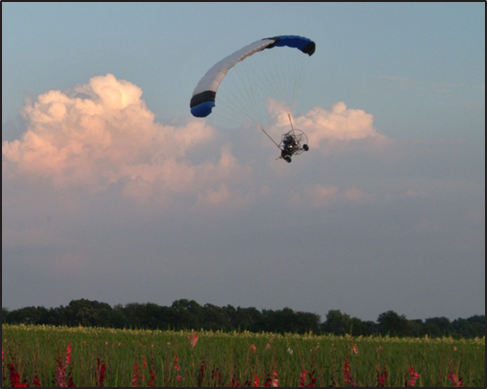
Figure 6-5. To turn, coordinate increased throttle with foot steering input.
To stop the turn and return to straight-and-level flight, you need to smoothly release the steering control input to achieve pendulum effect coordination. The pendulum stability of the PPC will do the rest to re-turn to the straight flight path.
All PPC controls should be manipulated with a smooth and slow motion. This will prevent pilot-induced os- cillation (PIO). Whether you are pushing the throttle forward to increase the pitch angle, or pushing the steering control to induce a turn, both controls should be operated smoothly and slowly—whether applying input or removing it. [Figure 6-6]
The rate at which a PPC turns is directly related to the amount of steering control input. The more input, the quicker the rate of turn. Be advised, however, if full steering input is used and adequate throttle is not used to compensate, the vertical component of lift is reduced significantly and a rapid descent will ensue as the turn progresses.
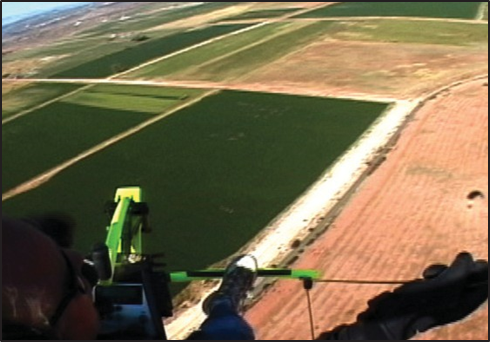
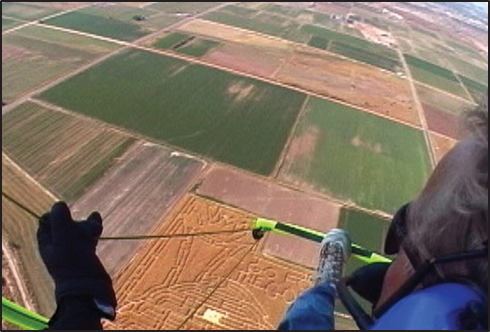
Figure 6-6. Push the foot control and pull the steering line smoothly and slowly.
Common Errors for Level Turns
- Failure to adequately clear the area before beginning the turn.
- Attempting to sit up straight, in relation to the ground, during a turn, rather than maintaining posture with the cart.
- Insufficient feel for the PPC.
- Gaining proficiency in turning in only one direction; not practicing turns in both directions
- Failure to coordinate the throttle with the steering controls.
- Altitude gain/loss during the turn.
- Too great of a bank angle.
Climbs and Climbing Turns, Descents and Descending Turns
To gain altitude, increase engine RPM. To lose altitude, decrease engine RPM. When a PPC enters a climb, it changes the flight path from level or descending (with level or declined planes) to ascending with an inclined plane. [Figure 6-7]
Straight climbs are achieved by increasing the throttle above the level flight setting and holding a straight heading. Climbing turns require more throttle than straight climbs.
During any descent, the pilot must clear the area below and to the turning side (if applicable) before beginning these maneuvers.
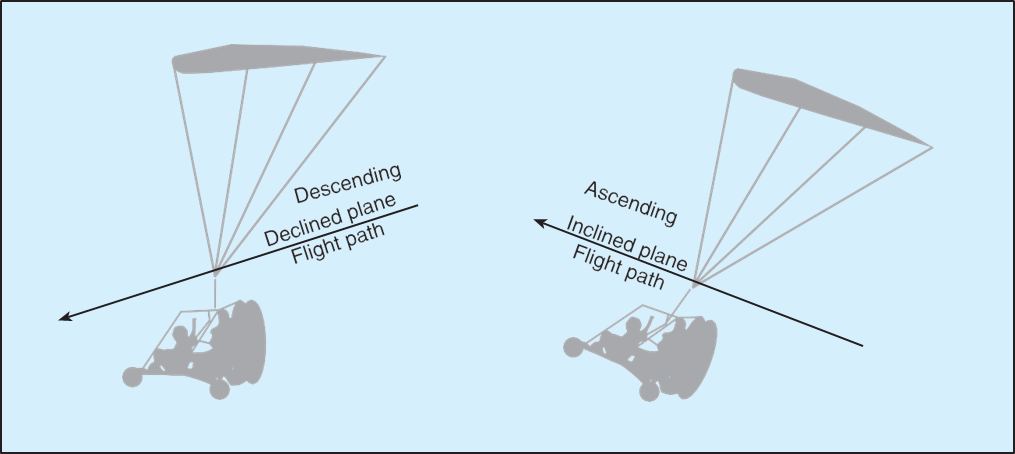
Figure 6-7. When a PPC stabilizes in a climb or descent, the flight path is a declined or inclined plane.
To descend, reduce the throttle below the straight and level RPM while flying straight or in a turn.
Throttle reduction is the basis for determining the descent rate. Banking the aircraft will also increase the descent rate. Greater bank angles result in greater descent rates.
Gliding
A glide is a basic maneuver in which the PPC loses altitude in a controlled descent with little or no engine power.
The PPC glide ratio is the distance the aircraft will travel forward in relation to the altitude it loses. For instance, if the aircraft travels 3,000 feet forward while descending 1,000 feet, its glide ratio is said to be 3 to
1. Wind is a major influence on the gliding distance in relationship to the PPC movement over the ground. With a tailwind, the PPC will glide farther, perhaps with a 5 to 1 glide ratio because of the higher ground speed. Conversely, with a headwind or a crosswind, the aircraft will not glide as far, perhaps a 2 to 1 glide ratio, because of the slower ground speed.
Typically, a PPC is designed to fly efficiently near the best lift-to-drag ratio. Adding flare will normally decrease your speed by increasing your drag and angle of attack, reducing your glide ratio. Do not attempt to “stretch” a glide by applying flare and reducing the airspeed. Attempts to stretch a glide will invariably result in an increase in the descent rate and angle of descent.
A stabilized power-off descent is referred to as a normal glide. The flight instructor, while demonstrating a normal glide, should direct the pilot to note:
- sounds made by the PPC,
- no steering control is required except to maintain the intended direction, and
- feel of the powered parachute.
Wing Trim
The powered parachute is designed so there is no pressure needed on the flight steering controls, thus, no pulling on the trailing edge when the PPC is flying along normally. If properly trimmed, the PPC will fly straight with no pilot input except for slight variations due to left-turning tendencies. If the PPC is flying out of this basic balanced condition, one of the steer- ing controls can be pulled down and slight pressure applied on the side to reduce the speed of the faster side wing with a trim lock to temporarily relieve the pilot of constant steering input. This trim lock is a mechanical device the pilot can set on the ground or in flight. [Figure 6-8] It holds the pressure on the side that needs it so the pilot does not have to continually apply pressure. Due to the inefficiency of increased drag, the constant use of trim locks should not be a replacement for a well-set up and properly trimmed wing. Most PPCs are currently not equipped with trim locks but this will depend on the specific manufacturer- er and make/model. An improperly trimmed PPC can quickly produce pilot tension and fatigue, requiring constant pressure on one of the steering bars.
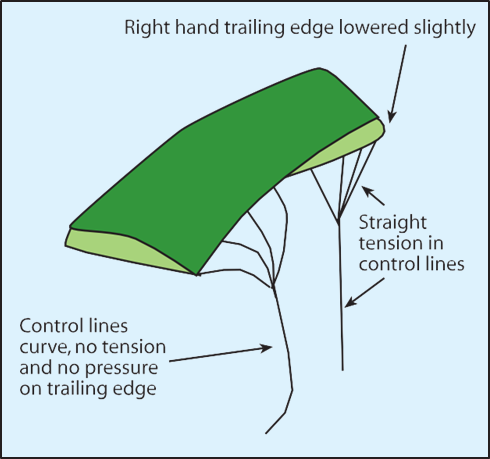
Figure 6-8. The right trailing edge is pulled down slightly using the trim system, to correct for the left-turning tendency.





